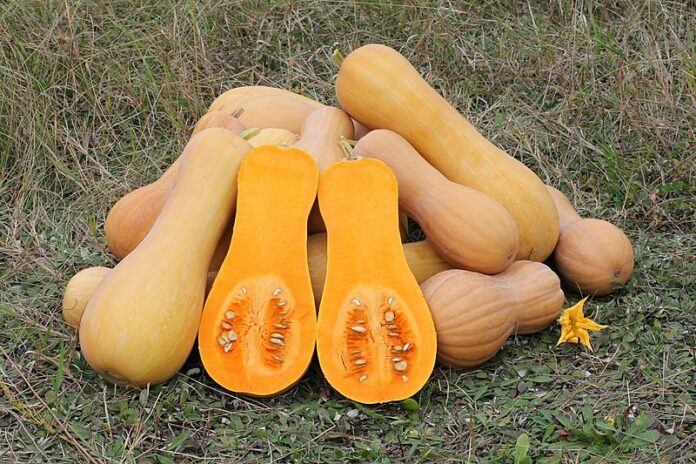Butternut squash is a type of winter squash with pale orange skin and a bright orange interior. Both the skin and the flesh are hard and firm, and it’s shaped almost like an elongated pear. Like pumpkins and zucchini, butternut squash is a member of the cucurbitaceae family.
Squash is among the oldest known crops, dating back 10,000 years to Mexico and Central America. The name squash comes from the Native American word askutasquash, which means uncooked or eaten raw.
The taste of butternut squash is fairly mild, somewhat sweet, and a little bit nutty. Its flavor may remind you of a cross between a sweet potato and a carrot or turnip.
What Butternut Squash can do for you
It’s a great hydrator. One serving of butternut squash is roughly 87% water, which can help keep you hydrated.
It’s good for your immunity. Like other orange-colored fruits and vegetables, butternut squash is full of beta-carotene and alpha-carotene. Your body converts them to vitamin A, which is important for your immune system.
It’s excellent for your eyes. Butternut squash has lutein and zeaxanthin, often found in yellow fruits and vegetables as well as eggs. Along with beta-carotene and vitamin A, these protect your eyes from ultraviolet rays.
Keep in mind that your body needs a bit of healthy fat to best absorb these eye-benefitting nutrients, so consider eating butternut squash with a little drizzle of olive oil.
It’s a good source of fiber. Foods high in dietary fiber can help keep your weight in balance and lower your cancer risk. Research shows that butternut squash can help reduce your risk of colorectal cancer, in particular.
It can help your blood pressure. Butternut squash is high in potassium, which can help keep your blood pressure in check. Managing your blood pressure can reduce your risk for stroke and heart disease.
Its fiber helps with blood sugar. Butternut squash contains a type of fiber that’s not digestible. If you have diabetes, it can help keep your blood sugar from rising after eating. Butternut squash also has a low glycemic index, which means that its carbs are digested more slowly. This also helps keep blood sugar from rising.
How to Peel Butternut Squash
Butternut squash is known for its thick, tough skin. Peeling it can be quite an arm workout, but there are a few ways to make it easier:
Cut a thin slice off the bottom and top so the butternut squash will stand flat on a cutting board. Then use a knife or peeler to slice the skin off from the top to the bottom. Always cut away from your body.
If the skin is too tough to manage, pierce the squash a few times with a fork and put it in the microwave for a minute or two. This will soften the skin and make it easier to peel.
Cut it in half and bake the squash with the skin on. It will easily peel away after it’s done cooking.
How to Cook Butternut Squash
After it’s peeled, it’s time to prep the butternut squash. Cut it in half the long way and scoop out the seeds with a spoon. You can throw them away or spread them out on a cookie sheet and roast them in the oven — just like you might do with pumpkin seeds.
There are so many delicious ways to eat butternut squash. Here are four to get you started.
Boil it: Cut the squash into cubes and boil them until soft.
Roast it: Cube the squash, spread the cubes on a baking tray, drizzle with oil, and sprinkle with salt and pepper. Then roast in the oven until cooked through.
Mash it: Do either of the above. Then mash the squash with a fork or masher.
Soup it up: Butternut squash makes a delicious addition to soup. Puree cooked squash with a little broth or cream and add seasonings of your choice.
Source: www.webmd.com










